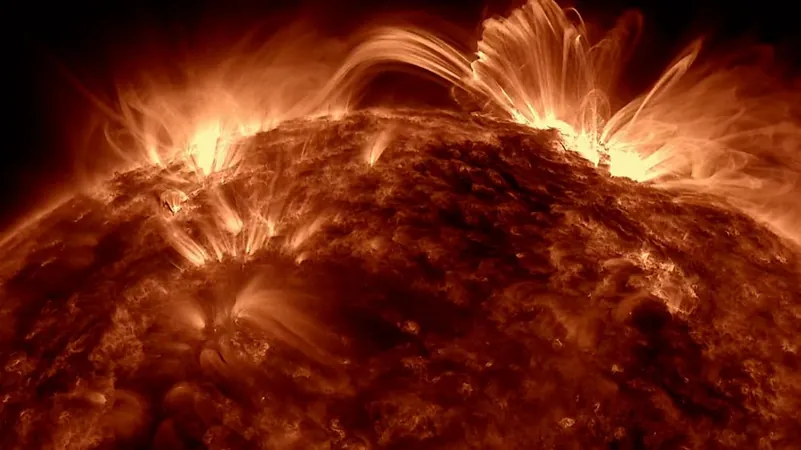
The Threat of Solar Storms Explained: What You Need to Know to Stay Safe
2024-10-09
Author: Olivia
Introduction
As concerns over space weather continue to rise, it’s crucial to understand the potential risks associated with solar storms. Solar storms occur when the Sun emits a burst of solar wind and magnetic fields that can disrupt satellite communication, GPS systems, and even power grids. While these events often go unnoticed by the average person, they can have devastating effects on technology and infrastructure.
Solar Cycle 25
In recent years, scientists have become increasingly adept at predicting solar storms, particularly as we enter a new solar cycle. The Solar Cycle 25, which began in December 2019, is expected to peak around 2025. With this heightened solar activity, experts warn that the likelihood of solar storms affecting Earth will also increase.
Historical Significance
The most severe solar storms, such as the Carrington Event of 1859, can result in widespread disruptions to electrical systems and communications. Modern technology relies heavily on satellites that can be vulnerable during these storms, leading to potential issues ranging from air travel delays to GPS inaccuracies.
Preparation and Mitigation
Experts recommend practical steps individuals and organizations can take to prepare for the impacts of solar storms. This includes keeping an emergency kit, backing up data, and staying informed through updates from weather monitoring agencies like NOAA’s Space Weather Prediction Center.
Conclusion
Awareness is key; by understanding the risks and being prepared, we can mitigate the potential fallout from these solar events. Don't leave your fate in the hands of solar activity—take action now to ensure you're ready for any cosmic surprises that may come your way.









 Brasil (PT)
Brasil (PT)
 Canada (EN)
Canada (EN)
 Chile (ES)
Chile (ES)
 España (ES)
España (ES)
 France (FR)
France (FR)
 Hong Kong (EN)
Hong Kong (EN)
 Italia (IT)
Italia (IT)
 日本 (JA)
日本 (JA)
 Magyarország (HU)
Magyarország (HU)
 Norge (NO)
Norge (NO)
 Polska (PL)
Polska (PL)
 Schweiz (DE)
Schweiz (DE)
 Singapore (EN)
Singapore (EN)
 Sverige (SV)
Sverige (SV)
 Suomi (FI)
Suomi (FI)
 Türkiye (TR)
Türkiye (TR)